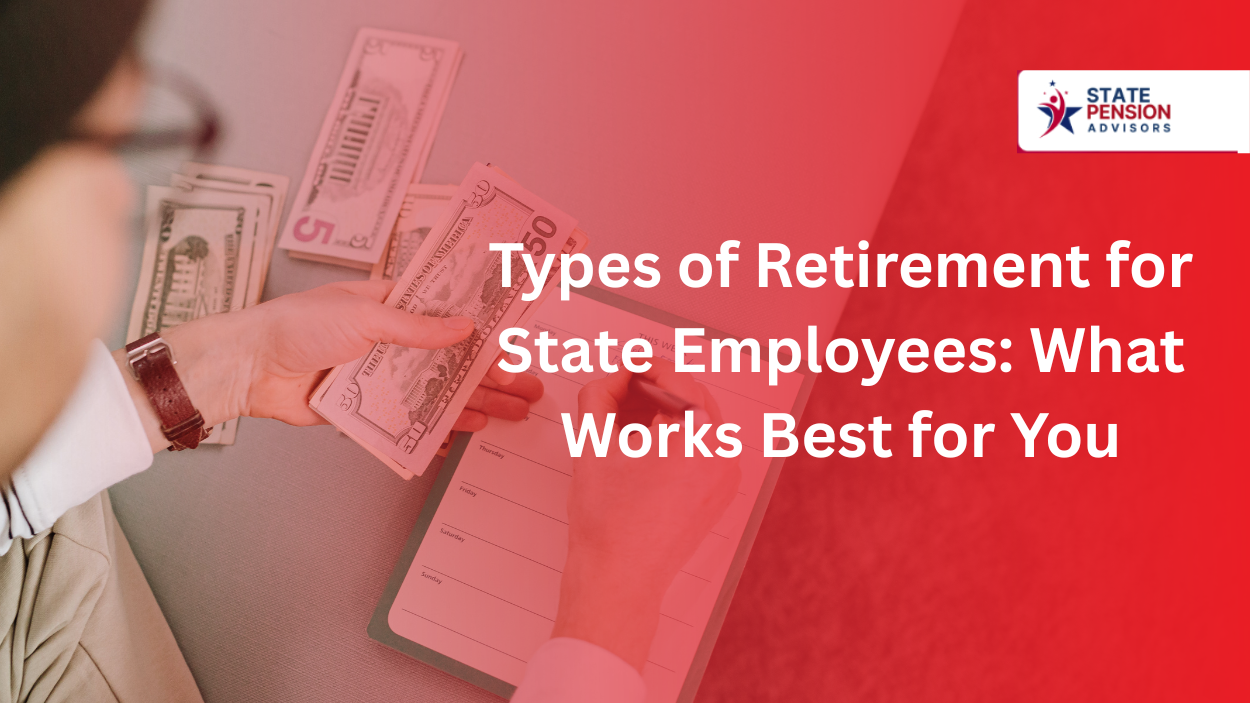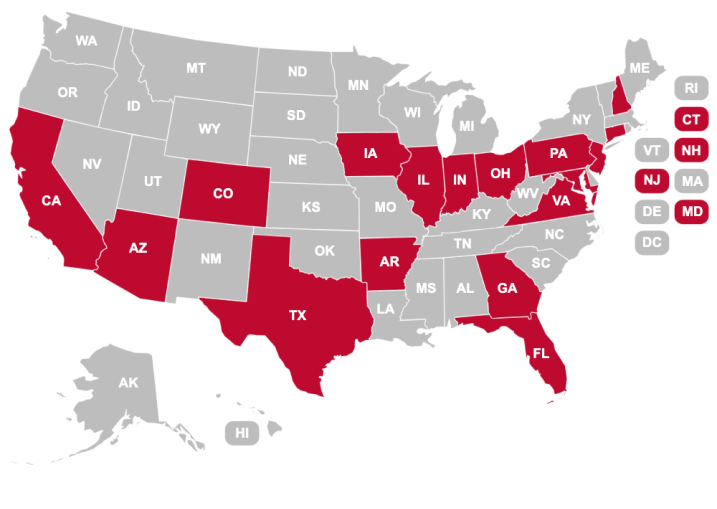California Retirement Benefits: Everything State Employees Should Know

California has long been the dream destination for those seeking not just sunshine and stunning coastlines, but also a secure and fulfilling retirement. For millions of public employees and educators, the state offers some of the most structured and reliable retirement systems in the country.
California retirement benefits are primarily managed through two major systems the California Public Employees’ Retirement System (CalPERS) and the California State Teachers’ Retirement System (CalSTRS). Together, these programs ensure that eligible individuals can enjoy financial stability and peace of mind long after their working years.
Let’s take a deeper look at California Retirement Benefits and how to secure your retirement.
1. Understanding the California State Pension System
California’s retirement framework is designed to reward years of dedicated public service with dependable lifetime income. The two primary systems are:
CalPERS – For Public Employees
The California Public Employees’ Retirement System (CalPERS) is one of the largest pension funds in the world. It serves more than 2 million members, including state, school, and public agency employees.
CalPERS provides a defined benefit plan, which means the retirement benefit amount is guaranteed and calculated based on a formula, not investment returns. Your pension grows with your service years and final compensation, offering a predictable income for life.
The formula used is typically:
Service Credit × Benefit Factor × Final Compensation = Monthly Pension
For instance, if an employee works for 25 years, retires at age 60 with a benefit factor of 2.0%, and has a final compensation of $6,000, their pension would be:
25 × 2.0% × $6,000 = $3,000 per month.
This structure rewards longevity and loyalty while ensuring financial security during retirement.
CalSTRS - For Educators
The California State Teachers’ Retirement System (CalSTRS) serves educators and school administrators across the state. Like CalPERS, it’s a defined benefit program, offering guaranteed lifetime income upon retirement.
CalSTRS benefits are based on:
- Years of Service Credit
- Final Compensation (highest average salary over a specific period)
- Age at Retirement
Educators also have access to Defined Contribution and Cash Balance plans for additional savings flexibility. These allow teachers to supplement their pension income and enjoy greater control over investment decisions.
2. Additional Retirement Savings Options
While CalPERS and CalSTRS form the foundation of California’s retirement system, employees can also participate in voluntary savings programs to build additional wealth.
CalPERS 457 Deferred Compensation Plan
This plan allows employees to set aside a portion of their income before taxes, reducing taxable income today while building savings for tomorrow. The money grows tax-deferred until withdrawal at retirement, helping participants accumulate a substantial nest egg alongside their pension.
Participants can:
- Choose from various investment options.
- Make regular or one-time contributions.
- Adjust savings rates as their financial goals evolve.
The flexibility of the 457 plan makes it a valuable supplement to traditional pension income.
Must read - what age can i retire in california
3. Health and Medical Benefits After Retirement
Retirement planning isn’t just about income; healthcare coverage plays an equally crucial role. CalPERS offers comprehensive retiree health benefits to eligible members and their families, ensuring continued access to quality healthcare.
Retirees can choose from:
- Preferred Provider Organizations (PPOs)
- Health Maintenance Organizations (HMOs)
- Medicare-coordinated plans
The state contributes toward retiree health premiums, reducing out-of-pocket costs significantly. Moreover, retirees who qualify for Medicare can enroll in CalPERS Medicare plans, which coordinate coverage seamlessly to maximize benefits and minimize medical expenses.
4. Cost-of-Living Adjustments (COLA)
Inflation can erode purchasing power over time, but California’s retirement systems are designed to keep up. Both CalPERS and CalSTRS provide annual Cost-of-Living Adjustments (COLA) to ensure your pension retains its value.
- CalPERS: Typically provides up to 2% COLA annually, depending on inflation rates.
- CalSTRS: Offers up to 2% simple increase each year, ensuring a gradual rise in benefits.
These adjustments help retirees maintain their standard of living, no matter how economic conditions shift.
5. Pension and Income Calculation
Understanding how your future income is calculated can help you make better financial decisions today.
The pension calculation depends on three primary factors:
1. Service Credit
The total time you’ve worked in a CalPERS- or CalSTRS-covered position. More years equal higher benefits.
2. Benefit Factor
A percentage determined by your age at retirement. For example, at CalPERS, the benefit factor might increase from 1.5% at age 50 to 2.5% at age 63.
3. Final Compensation
Your average monthly pay for a defined period (usually 12 or 36 consecutive months) is typically your highest earning years.
Once these components are known, you can estimate your lifetime income using online CalPERS or CalSTRS pension calculators. These tools provide a realistic snapshot of post-retirement earnings, helping you plan with confidence.
6. Social Security and California Pensions
Not all California public employees are covered under Social Security, especially certain CalSTRS members.
However, those who are covered may see reduced Social Security benefits due to state provisions such as:
- Windfall Elimination Provision (WEP)
Reduces your Social Security benefit if you also receive a pension from non-covered employment. - Government Pension Offset (GPO)
May reduce spousal or survivor benefits if you receive a government pension.
7. Death and Survivor Benefits
Both CalPERS and CalSTRS offer financial protection for your loved ones through death and survivor benefits.
Survivor options typically include:
- Continuing Monthly Benefits for a spouse or dependent.
- Lump-Sum Payments in certain cases.
- Refunds of Contributions if no survivor benefits are payable.
8. Taxation on California Retirement Benefits
Pension income from CalPERS and CalSTRS is subject to income tax, but California does not tax public pension income separately.
For retirees moving out of state, taxation depends on the laws of your new state of residence, making it essential to plan relocation decisions carefully.
9. Tools and Resources for Retirees
California offers several online resources to help retirees manage and plan their benefits effectively:
- CalPERS Pension Calculator – Estimate your monthly pension based on years of service and salary.
- CalSTRS Retirement Benefits Calculator – Plan your educator retirement with accuracy.
- myCalPERS Account Portal – Access personal data, track contributions, and update information.
- Retirement Planning Workshops – Conducted regularly by both CalPERS and CalSTRS to educate members on maximizing benefits.
Final Thoughts
Retirement planning isn’t one-size-fits-all. While California’s CalPERS and CalSTRS systems offer strong benefits, understanding how to maximize them requires expert insight. At State Pension Advisors, we help you calculate your potential income, choose the right retirement date, and align your savings for a secure future.
Book your consultation today to make the most of your California retirement benefits and enjoy peace of mind for years to come.
Desclaimer
The information provided in this article is for educational and informational purposes only. It does not constitute financial, legal, or tax advice. Retirement benefits, eligibility, and policies may change over time. Readers are encouraged to consult official sources such as CalPERS and CalSTRS, or speak with a certified financial advisor, before making any retirement-related decisions.
FAQs
1. What are the benefits of retiring in California?
Retiring in California offers more than great weather; it provides comprehensive retirement systems like CalPERS and CalSTRS, ensuring lifetime pension income for eligible public employees and educators. Retirees also benefit from strong healthcare coverage, cost-of-living adjustments (COLA), and tax advantages, as California does not impose additional state taxes on public pensions. Combined with access to beautiful landscapes, cultural diversity, and quality medical care, California remains one of the most rewarding places to retire.
2. How much does retirement pay in California?
The amount you receive in retirement depends on your years of service, age at retirement, and final compensation.
For example, CalPERS and CalSTRS use formulas like:
Service Credit × Benefit Factor × Final Compensation = Pension
On average, CalPERS retirees earn between $2,500 and $4,000 per month, while CalSTRS retirees average around $4,500 per month. However, long-serving employees or those in higher-paying positions may earn significantly more. Using official pension calculators is the best way to estimate your individual benefit.
3. How long do you have to work for the state of California to get a retirement?
Most state employees become vested or eligible for a lifetime pension after five years of full-time service under CalPERS or CalSTRS. However, the amount you receive increases with additional years of service. Retiring earlier means lower benefits, while delaying retirement boosts your benefit factor. Many employees choose to retire after 20–30 years of service to maximize their pension and qualify for retiree health coverage.
4. How much Social Security will you get if you make $60,000 a year?
If you earn $60,000 annually throughout your career and retire at full retirement age (around 67), you can expect an estimated Social Security benefit of about $1,800–$2,000 per month.
The exact amount depends on your lifetime earnings and the age you start claiming benefits. Keep in mind that some California public employees (especially CalSTRS members) do not contribute to Social Security, so it’s important to confirm your eligibility and plan accordingly with a State Pension Advisor.










.png)
.png)










